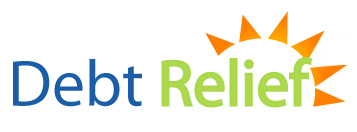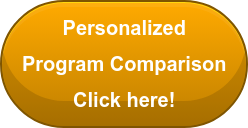 In order to pay off credit card debt successfully, it is important to commit yourself to improving your financial situation for the long term. There is no such this as a quick fix. Getting out of debt takes dedication and a realistic plan. With so many options to choose from, it can be overwhelming to figure out where to begin, where to seek advice, and whether you should tackle the debt on your own or enlist the services of a debt relief provider. Let's look at your options.
In order to pay off credit card debt successfully, it is important to commit yourself to improving your financial situation for the long term. There is no such this as a quick fix. Getting out of debt takes dedication and a realistic plan. With so many options to choose from, it can be overwhelming to figure out where to begin, where to seek advice, and whether you should tackle the debt on your own or enlist the services of a debt relief provider. Let's look at your options.
Tackling Credit Card Debt on Your Own
When paying off credit card debt without the assistance of a debt relief provider or debt consolidation plan, it is imperative that you pay off your credit card with the highest interest rate first, regardless of the balance owed. The debt that you carry with the highest interest rate costs you the most money. The less time you spend carrying a balance on that high interest card, the more money you will save in the long run.
Paying the minimum balance each month does not work. In order to get a handle on your credit card debt, you must pay more than the minimum balance each month. Paying more than the minimum each month helps you pay off your debt faster, but when paying on a bi-monthly basis, you'll reduce the amount of interest paid. That means that more of your money will go towards paying the principal amount owed, thus cutting your balance dramatically.
In addition to paying off your highest interest rate card first, you must learn to stick to a budget. This is the only way to figure out how much more you can send to your creditors each month. You'll be amazed to see how your daily $4 lattes and take-out add up. Making simple changes like brewing your own coffee at home or work and packing a daily lunch may seem like sacrifices right now, but will be well worth it once you start seeing your credit card balances start to come down. Get into the routine of asking yourself, "is this in my budget?" This will eventually become a way of life and you'll be able to break the habit that got you into debt in the first place.
Debt Management Plan
A Debt Management Plan (DMP) can work wonders for those who wish to pay off credit card debt and other unsecured debt such as medical bills or retail debt. With a DMP, all of your unsecured debt is consolidated into one monthly payment. When you enlist the services of a debt management provider, the company will work to assist you with an affordable payment plan.
When you join a DMP to pay off credit card debt, you will find that creditors are more willing to negotiate reduced monthly payments, interest rates and late fees. Why? Because with a Debt Management Plan you will be paying off your credit cards in full. The benefits of a DMP can typically be seen after about 3 months of timely payments. With a DMP, you must be certain that you can afford to make consistent monthly payments because if you fail to make a payment or are late, it can affect your relationship with creditors.
Debt Settlement
Debt Settlement is an option for those who may not be able to afford the monthly payments of a DMP. The debt settlement provider will negotiate with your creditors to accept a portion of your unsecured debt in satisfaction of the full amount. With debt settlement, you'll make affordable monthly deposits into a trust account. This type of debt relief plan will have a negative impact on your credit, so it's important to discuss this and all options with a qualified representative.
Dealing with credit card debt can be overwhelming, and it can be especially frustrating for those who choose to pay off debt without the assistance of a reputable debt relief provider. Debt Relief NW, Inc. offers multiple options and realistic plans. We will work with you to recommend the debt relief option that best meets your needs. Paying off credit card debt requires a solid commitment on your part. As your partner, you can count on Debt Relief to help you in your pursuit of a debt-free life.
Ask one of our Solutions Specialists to get answers to any questions you have about credit card debt consolidation and our debt-relief plans. Or visit the Debt Relief FAQ page to find the answers to our most common questions.







